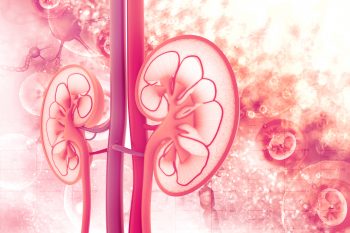
The HIMALYAYAS trial was a phase 3 study of the efficacy and safety of roxadustat in the treatment of anemia in incident dialysis patients. Roxadustat (FG-4592) is an oral hypoxia-inducible factor prolyl hydroxylase inhibitor that stimulates erythropoiesis and regulates metabolism of iron. Results of the randomized, open-label, active-controlled study were reported during a presentation at Kidney Week 2019 by Robert Provenzano, MD, FACP, FASN. The presentation was titled HIMALAYAS: A Phase 3, Randomized, Open-Label, Active-Controlled Study of the Efficacy and Safety of Roxadustat in the Treatment of Anemia in Incident Dialysis Patients.
Incident dialysis patients who had not been treated with an erythropoiesis stimulating agent or had limited prior use were randomized 1:1 to roxadustat or epoetin alfa. Use of oral iron was allowed; parenteral iron was restricted. Oral roxadustat was dosed three times per week; the initial dose was weight-based. Epoetin alfa was prescribed according to the country-specific product labeling; roxadustat doses were determined using an algorithm.
The primary end point of interest for the US FDA was mean changes in hemoglobin A1c from baseline to weeks 28 to 52. For the EU EMA, the primary end point was the percentage of patients who achieved a hemoglobin response week 1 through 24. A hemoglobin response was defined at two consecutive visits during the first 24 weeks as achieving a hemoglobin level of 11 and an increase of 1 g/dL if baseline hemoglobin was >8 g/dL or 2 g/dL if baseline hemoglobin was <8 g/dL.
Adverse events, vital signs, electrocardiogram findings, and clinical laboratory values were used to assess safety and tolerability.
A total of 1043 patients ≥18 years of age in 17 countries were randomized: 522 to the roxadustat arm and 521 to the epoetin alfa arm. The majority were white; 8.4% in the roxadustat arm and 9.6% in the epoetin alfa arm were black. In the roxadustat arm, 183 patients (35.1%) had diabetes mellitus compared with 34.4% in the epoetin alfa arm. Mean baseline hemoglobin was 8.43 g/dL in the roxadustat arm and 8.46 g/dL in the epoetin alfa arm.
Mean change in hemoglobin from baseline to the average over week 28 to 53 was 2.57 in the roxadustat arm versus 2.36 in the epoetin alfa arm. The noninferiority criteria were met as the lower bound of 95% confidence interval was above the noninferiority margin of –0.785 g/dL, and the superiority over epoetin alfa was also achieved, P=.0005. Patients in the roxadustat arm had a hemoglobin response rate of 88.2% compared with 84.4% in the epoetin alfa arm, meeting EU’s primary end point noninferiority criterion.
The overall safety profile was consistent with results seen in previous roxadustat trials; pooled safety findings were reported in a late breaker abstract at the meeting.
In summary, the researchers said, “Roxadustat was noninferior and subsequently demonstrated superiority over epoetin alfa in the mean change in hemoglobin from baseline in patients incident to dialysis.”
Source: Provenzano R, Evgeny S, Liubov E, et al. HIMALAYAS: A phase 3, randomized, open-label, active-controlled study of the efficacy and safety of roxadustat in the treatment of anemia in incident-dialysis patients. Abstract of a presentation at the American Society of Nephrology Kidney Week 2019 (Abstract TH-OR021), November 7, 2019, Washington, DC.






 © 2025 Mashup Media, LLC, a Formedics Property. All Rights Reserved.
© 2025 Mashup Media, LLC, a Formedics Property. All Rights Reserved.